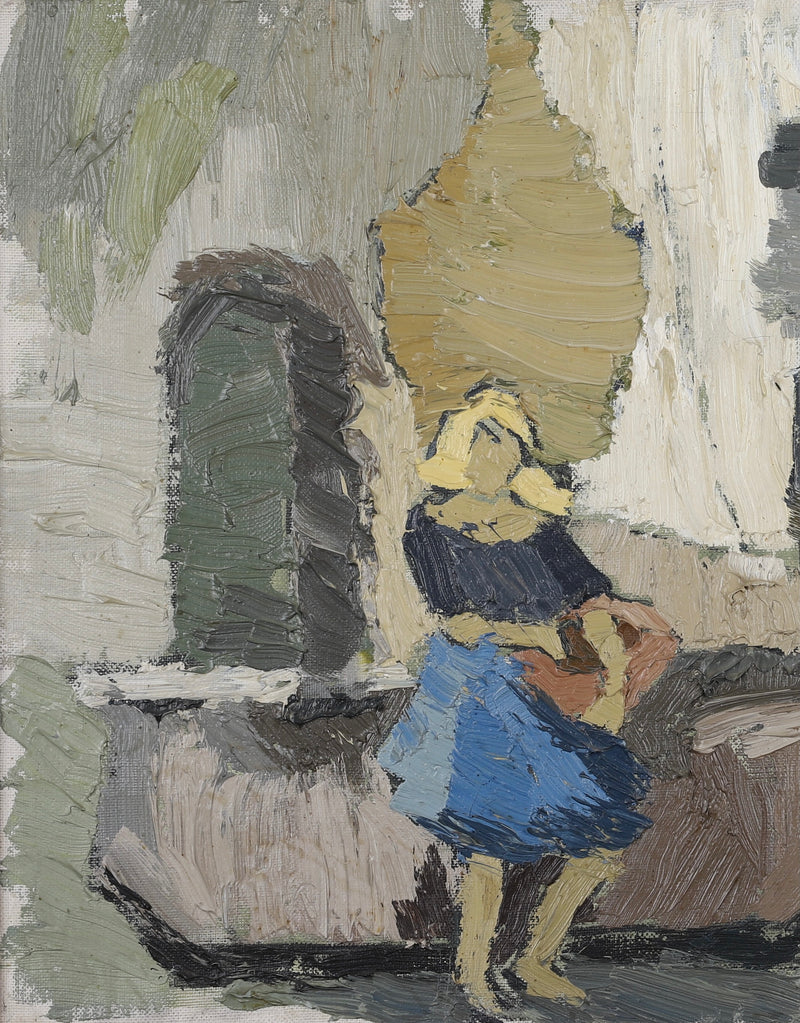Revealing the Keys Behind Expressive Figurative Oil Painting Styles
Revealing the Keys Behind Expressive Figurative Oil Painting Styles
Blog Article
The Function of Emotion and Expression in Metaphorical Oil Painting: A Thorough Analysis of Subject Matter and Make-up
The interplay of feeling and expression in figurative oil painting serves as an important lens through which one can take a look at the elaborate partnership between topic and composition. Artists harness different strategies, from shade choice to brushstroke dynamics, to grow psychological vibration within their works. This nuanced orchestration not only shapes customer understanding however additionally welcomes a deeper query right into just how these aspects coalesce to show the intricacies of human experience. As we discover this abundant surface, one need to think about exactly how specific situation researches brighten the more comprehensive effects of these imaginative options.
Comprehending Feeling in Art
Feeling in art works as an effective channel for expression, permitting musicians to share complex feelings via their work. In figurative oil paint, this psychological depth is often represented with the representation of the human number, catching the nuances of human experience. The choice of subject, shade combination, and brushwork all add to the psychological resonance of a piece.
Artists frequently bring into play individual experiences, social concerns, or global styles to stimulate feelings in the audience. For example, a portrait may reflect susceptability, while a dynamic number in activity can signify freedom or chaos. These emotional threads link the customer to the artwork, promoting a dialogue that goes beyond the aesthetic medium.
Moreover, the interplay between light and shadow can intensify emotional strength, assisting the visitor's gaze and accentuating particular elements within the structure. The use of texture in oil paint further includes layers of intricacy, inviting a responsive action that boosts the psychological experience. Generally, understanding emotion in art is essential for appreciating the nuances that characterize figurative oil painting, as it changes mere depiction into a profound expedition of the human condition.
Key Aspects of Make-up
In the world of metaphorical oil painting, the make-up functions as the underlying framework that organizes aesthetic aspects and boosts the psychological narrative. Essential components of composition include balance, contrast, focal point, and rhythm, each adding to the overall impact of the artwork.
Equilibrium describes the distribution of aesthetic weight within the paint, which can be attained with in proportion or asymmetrical setups. A well-balanced structure supplies security, allowing the viewer to engage with the item harmoniously - figurative oil painting. Comparison, on the various other hand, involves comparing various components, such as light and dark or warm and trendy shades, to lead the visitor's eye and evoke psychological actions
The focal point is essential, as it directs interest to the most substantial component of the paint, often highlighting the emotional core of the story. By masterfully integrating these vital components, musicians can craft compelling and emotionally resonant metaphorical oil paintings that captivate and engage their audience.
Topic and Its Impact
Subject matter plays a critical function in figurative oil paint, as it not only acts as the structure for the story however likewise forms the customer's interpretation and psychological engagement with the artwork. The choice of subject-- be it a solitary figure, a group dynamic, or a thematic depiction-- straight influences the emotional ambience communicated to the audience.

As an see this website example, portraits usually stimulate individual links, exposing the intricacies of human expression and character, while scenes illustrating communal activities can create a feeling of belonging or nostalgia. The cultural and historic context of the subject matter enhances the viewer's understanding, triggering deeper representations on societal norms, worths, and the human condition.
Different subjects also generate varying levels of involvement; a remarkable problem depicted via figures in tension may evoke sensations of anxiousness or compassion, while serene landscapes can conjure up harmony and reflection. Eventually, the effect of subject in metaphorical oil paint is extensive, as it acts as a channel for psychological resonance, guiding the customer's reaction and analysis, and promoting a connection in between the viewer and the art work. This interplay is crucial for the effective communication of the musician's intent.
Techniques for Evoking Sensations
The performance of figurative oil painting in sharing feelings is dramatically affected by the techniques utilized by the musician. Among the most essential approaches is the use of color concept, where the strategic option of shades can evoke details emotional actions. Warm shades, such as oranges and reds, frequently evoke feelings of passion or hostility, while cooler tones like blues and eco-friendlies often tend to stimulate calmness or unhappiness.
Another necessary method is the control of light and shadow, referred to as chiaroscuro. This technique boosts the three-dimensionality of figures, producing significant contrasts that can heighten psychological depth. The placement of light can guide viewers' emotions, highlighting details elements of the structure.
Brushwork additionally plays a vital duty; loose, expressive strokes can share power and spontaneity, whereas smoother strategies could recommend serenity or accuracy. Furthermore, the setup of subjects within the composition can affect emotional influence. Close closeness can recommend intimacy, while distance may show seclusion.
Eventually, the mix of these strategies enables description artists to craft stories that resonate with the visitor, transforming a plain aesthetic experience right into an expressive emotional journey. - figurative oil painting

Case Studies of Significant Functions
Examining remarkable works of metaphorical oil painting discloses exactly how various methods are employed to stimulate powerful feelings. One excellent instance is Edvard Munch's "The Scream," where the altered figure and swirling history convey existential dread. Munch's use of color-- dazzling oranges and deep blues-- heightens the psychological impact, showcasing exactly how palette selections can shape customer experience.
Another significant job is Pablo Picasso's "Les Demoiselles d'Avignon." Below, fragmented kinds and bold brushstrokes reflect a troubled psychological landscape, testing standard depictions of the women number. Picasso's ingenious make-up not just catches the visitor's interest however also invites reflection on themes of identification and sexuality.
Additionally, Frida Kahlo's "The 2 Fridas" provides a poignant exploration of duality and self-identity. The different numbers, connected by a shared heart, exhibit Kahlo's emotional depth and individual narrative. figurative oil painting. Her meticulous interest to information and symbolic aspects serve to engage audiences on a natural level
These study highlight the profound link in between feeling and composition in figurative oil paint, exposing how musicians harness method to communicate intricate feelings and narratives that reverberate across time and society.

Conclusion
In conclusion, the interaction of feeling and expression in figurative oil painting substantially improves the viewer's experience and analysis of the art work. With a mindful selection of subject and compositional methods, musicians share profound narratives that resonate on both global and personal levels. The application of shade theory, chiaroscuro, and brushwork additional intensifies emotional depth, changing each canvas into a powerful reflection of the complexities of the human experience.
In figurative oil paint, this psychological deepness is commonly represented through the representation of the human figure, recording the nuances of human experience.Additionally, the interplay between light and shadow can amplify emotional intensity, directing the visitor's look and attracting focus to particular aspects within the composition. The usage of structure in oil paint additionally adds layers of intricacy, navigate to this website welcoming a responsive action that improves the emotional experience.The focal point is critical, as it directs focus to the most considerable component of the paint, commonly highlighting the emotional core of the narrative. Ultimately, the impact of subject matter in figurative oil paint is extensive, as it offers as a channel for psychological resonance, leading the viewer's action and interpretation, and cultivating a link in between the viewer and the art work.
Report this page